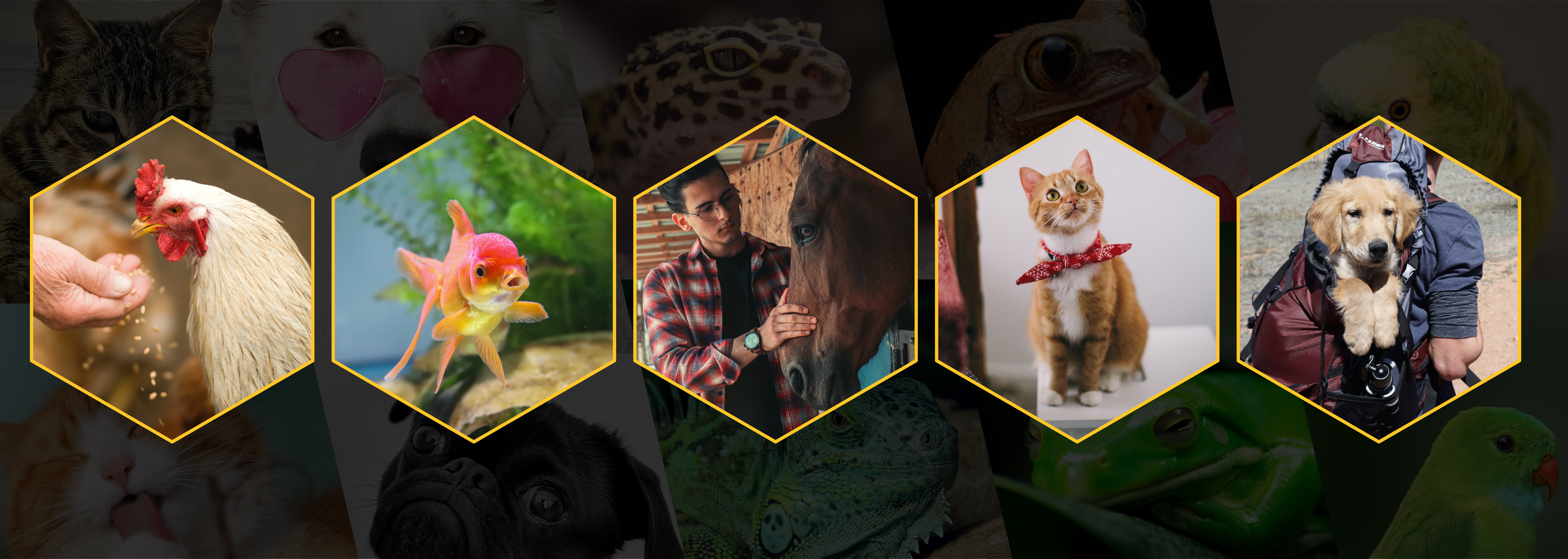
CISA Pet Ambassador Program

The dog days of Summer
Summer, a two-ish-year-old border collie mix, was in bad shape as she entered the NEA Veterinary Clinic/MyZouy Rescue in Corning, Arkansas.
A good samaritan had rushed her to the clinic after finding the dog badly wounded from a car accident. Her injuries were extensive and included a compound fracture of the tibia and the fibula, a multiple-piece fracture of the femur and a broken pelvis. Her temperature was spiking and further tests revealed she was positive for heartworm.
Her situation was dire, so Alyson, who works at the clinic and is an ASU Online student in the CISA pre-veterinary program, tried to track down her owners, but none could be found. With no guardians to make her medical decisions, the veterinarian was left to make the fateful choice. Euthanize or amputate. Something in the doctor told her this pup could survive and the team sprang into action to save the life of Summer.
The surgery went well and the clinic staff treated all of Summer's ailments. As Summer recovered, Alyson watched over her, forming a beautiful bond. Alyson knew in her heart that she was supposed to adopt this courageous dog, which is exactly what she did.
As soon as Summer got back on her three feet, Alyson brought her girl home to her new family, which includes another 40-pound border collie named Koe and two cats named Avenger and Tanjiro.
Summer is a happy, active girl, who enjoys playing with her fur siblings, running around the park and being her best cuddle buddy to Alyson.
Life and limb
Commentary by veterinarian Dr. Sarah Churgin, Clinical Assistant Professor of Animal Health, College of Integrative Sciences and Arts, ASU Polytechnic campus.
Summer is a great example of how well our pets adapt to change and challenges! Pet owners are often very concerned when a veterinarian first mentions a surgical treatment option like amputation. It certainly sounds like a daunting surgery and a major adjustment for an active pet. However, the surgery itself is a relatively common one in most veterinary practices and because of all the modern advances in pain control and anesthesia, most dogs and cats don’t even skip a beat after these procedures.
Since amputation is usually done as a last resort because of a very painful or life-threatening condition in a limb, animals almost always wake up feeling much better after the surgery because the source of pain is already gone. After learning to balance, walk, play, and run on their new “tripod” set of legs, most patients go on to live a completely normal, active life, just like Summer has done.
Amputation can be an option for dogs and cats when the damage to their affected limb is so severe that no treatment is available, as in Summer’s case, when the bone was too badly damaged to be repaired surgically. In other cases, amputation can be an option when a surgical fix might exist but is out of reach for an owner’s financial capabilities.
Amputation can even be a palliative care option in cases where the underlying disease cannot be cured, but the patient will be much more comfortable if the limb is removed. A classic example of this is canine osteosarcoma, a very painful type of bone cancer in dogs. Amputation can greatly improve the dog’s quality of life in these cases because they are so much more comfortable after surgery.
You might wonder whether every dog or cat is a good candidate for amputation, like Summer. Unfortunately, there are some pets for whom amputation is not a very good option – namely, if they already have significant problems in another limb, like arthritis or hip dysplasia. When a pet undergoes a limb amputation, they must rely on and place more weight on the three remaining limbs after surgery. This does put more pressure on the remaining joints and other structures, and in animals who already have a problem in another limb or joint, they may not be able to walk or move around well after amputation. In cases like this, the veterinarian will work together with the pet owner to find the best solution for the pet’s individual circumstances. This is why we often say that medicine is an art rather than a science; there is no one-size-fits-all in the medical world.
Summer certainly didn’t have an easy start to life, and she’s so lucky to have found Alyson, who gave her a chance to thrive after her traumatic injury. Summer is an inspiring example to us all of the resilience of a dog’s spirit!